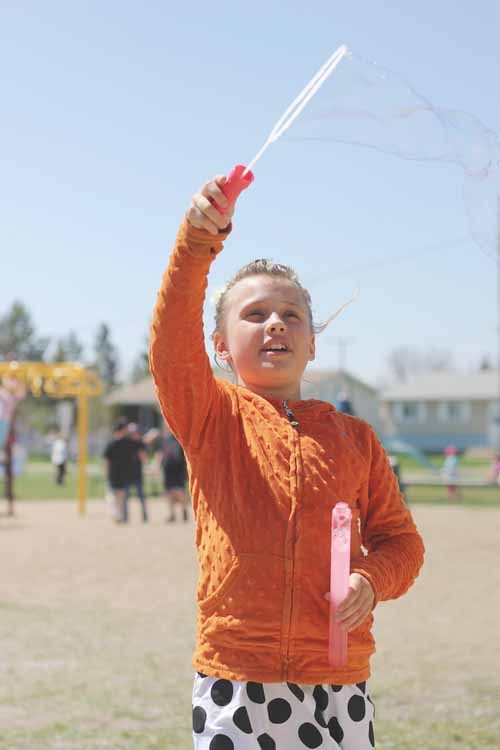At nine years old, Aaron Armstrong-Stewart of Melville spends more time tending to her medical needs each day than many adults will ever have to do.
"She was always a healthy, active child," says Chris Stewart, Aaron's father. "Then one day in 2009, I just noticed that she was drinking a lot of fluids and going to the bathroom a lot. So I took her to the hospital, and that's when we found out. In October of that year, she was diagnosed with diabetes."
The weeks and months that followed were a period of intense adjustment for Aaron's family.
"At first it was challenging. Aaron was very good, though. We talked about it and she accepted it quite quickly. She started doing her own meter readings and her own needles almost immediately," says Stewart.
Now, almost two years later, Aaron is one of two youth ambassadors for the Yorkton/Melville TELUS Walk to Cure Diabetes planned for Yorkton on June 5. She is a face for the Juvenile Diabetes Research Foundation (JDRF) and the thousands of children with juvenile diabetes that the foundation represents.
But while the disease "hasn't slowed her down," according to her father, diabetes remains a significant burden for any child.
"It's not fun," Aaron says. "You have to take needles and you have to test a lot. That's what I don't like. And I can't eat whatever I want to eat. It's not fair."
The nine-year-old has to test her blood sugar up to six times a day and receive insulin injections at least four times daily. She must carefully control what she eats and when.
"She's amazing. She's done very well. She's my little hero," says Stewart.
Aaron can do anything that her peers can do, so long as she maintains her blood sugar with snacks in between activities. She is active in jazz dancing, ballet, skiing, swimming, baseball, and piano. On the weekend, she likes to look after the horses on her father's farm. She is one of the fastest track & field athletes at Davison School.
"This year," Aaron says, "I'm doing all the races: 75, 100, 200, 400."
She is, in almost every way, a perfectly normal nine-year-old child.
But Aaron's parents live constantly with the knowledge of what could occur if Aaron's diabetes should ever be managed less well than it is now: complications that could damage her eyes, blood vessels, nerves, kidneys, heart, and more.
"It's insidious. You might think everything's fine if you're not controlling your blood sugars, but it's doing a lot of damage," says Stewart.
"And you feel very vulnerable. What would you do if for whatever reason they couldn't produce insulin anymore?"
Even those who properly manage their juvenile diabetes can anticipate a reduced life expectancy.
But diabetes is a disease for which better treatments and an eventual cure are considered realistic possibilities. That's why Aaron Armstrong-Stewart and her family are participating in the TELUS walk and other JDRF fundraisers; Stewart hopes that by the time Aaron is in her early 20s, a cure might be found.
Until then, they will continue to manage Aaron's condition as best they can.
"We do very well," Stewart says, "and she's an awesome kid."
More information on the TELUS Walk and juvenile diabetes can be found at www.jdrf.ca/walk.



